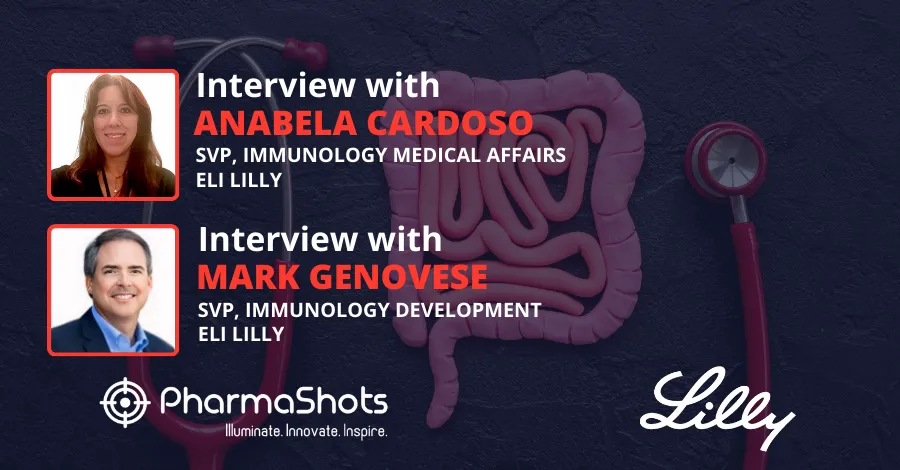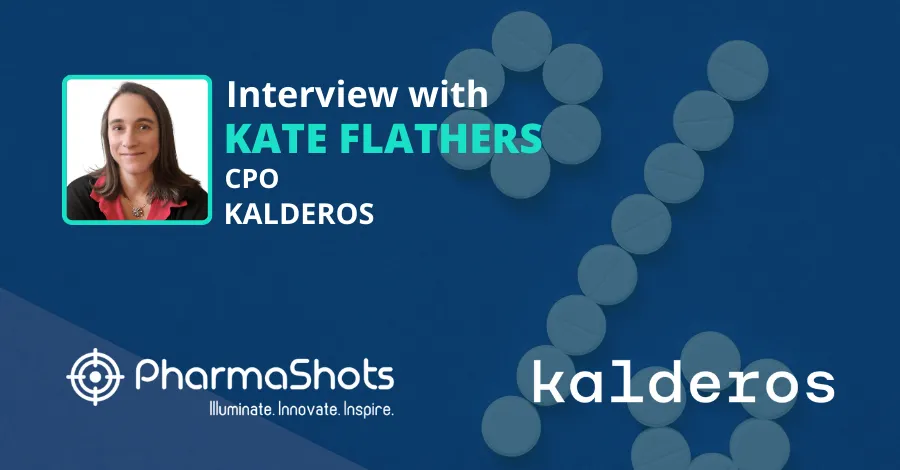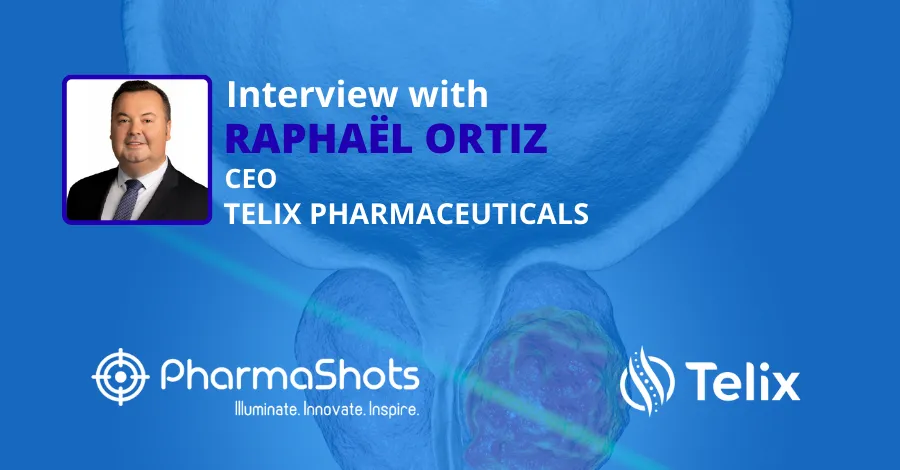
Enhancing Neurodegenerative Care: Stella Sarraf from Spinogenix in an Enlightening Dialogue Exchange with PharmaShots
Shots:
-
With a broad portfolio of candidates in ALS, Alzheimer’s disease, Schizophrenia, and Fragile X Syndrome, Spinogenix initiated the P-II study evaluating SPG302 for the treatment of patients with Alzheimer’s disease
-
SPG302, a synaptic regenerative therapy, is aimed to provide an effective and patient-friendly solution as a daily pill for ALS and Alzheimer’s disease
-
Today at PharmaShots, we have Stella Sarraf, CEO, Founder & Director at Spinogenix, shedding light on the study design from the P-II trial of SPG302
Saurabh: The initiation of this Phase 2 trial for SPG302 in Alzheimer's disease marks a significant step for Spinogenix. Could you elaborate on how this trial aligns with the company's broader portfolio and long-term vision for synaptic regenerative therapies?
Stella: Spinogenix was founded in 2016 with the mission to develop transformative therapeutics for diseases involving synapse loss and dysfunction, such as ALS (a type of motor neuron disease (MND), Alzheimer’s disease, schizophrenia, and Fragile X Syndrome. Synapses are the critical connections between neurons that allow us to think, plan, remember, and control motor functions. In neurodegenerative diseases like Alzheimer’s disease, these key connections, the synapses, become lost, damaged or impaired. Restoring these key connections in the brain could revolutionize treatments for a variety of neurodegenerative diseases. Currently, treatments for many of these conditions leave a critical gap in effective, patient-friendly solutions. At Spinogenix, we believe that slowing disease progression is not enough. Our long-term vision is to be able to restore synaptic function to reverse these diseases and give people their lives back.
This year we have initiated two Phase 2 trials evaluating SPG302 as a synaptic regenerative therapy administered as a once daily pill in ALS and Alzheimer’s disease, with a third trial planned in schizophrenia. We have also initiated a Phase 2 trial evaluating our other small molecule drug, SPG601, for the treatment of Fragile X syndrome. We believe our platform of small molecules, which have the remarkable property of being able to restore synapses, has broad potential to revolutionize the treatment landscape and provide hope for people worldwide.
Saurabh: The Alzheimer's treatment landscape is evolving rapidly. How does Spinogenix view the potential of SPG302 to differentiate itself within this landscape, particularly given its unique "first-in-class" mechanism of action?
Stella: The approved therapies for Alzheimer’s disease may slow disease progression, but they do not restore function and recover synapses like SPG302 aims to do. SPG302 is unique. SPG302 is the first potential synaptic regenerative therapy that aims to restore cognitive, motor, and other functions in these diseases. To date, current approaches to treating Alzheimer’s and other neurodegenerative diseases fall short because they are, at best, only marginally slowing disease progression, or simply treating the symptoms to lessen the impact of the disease. No available treatments offer more than a modest extension of lifespan. Our goal is to reverse disease progression at a point in pathogenesis – synapse loss – where diverse mechanisms converge to erode cognitive and motor functions. By regenerating lost synapses, SPG302 has the potential to restore cognitive function in people with AD and motor function in people with ALS. This synapse-focused regenerative medicine approach is very unique among the broad and diverse set of new therapeutics being developed for AD and ALS. We envision SPG302 being successful as a monotherapy in AD and ALS, and potentially being of great utility as a regenerative component of combination therapies involving other emerging therapeutic strategies.
Saurabh: How do you differentiate yourself from already existing treatment options? What are the unmet needs of the patients that can be addressed by SPG302?
Stella: SPG302 is being developed as a once-a-day pill which differs from many other drugs in development that are large macromolecules called “biologics”. These biologics do not penetrate the central nervous system (CNS) well and require IV infusion or intrathecal injections, thus making them difficult to administer. They are also costly to produce at scale. At Spinogenix, we are focused on developing small molecule drugs designed to pass through the blood-brain barrier and penetrate the CNS. Our oral drugs are designed to be taken by mouth which promotes ease of drug administration. To date the initial studies have shown a well-tolerated treatment with an excellent safety profile. Altogether, our therapeutics may provide an accessible yet powerful approach to treating neurodegenerative diseases like Alzheimer’s disease and ALS.
Saurabh: The Phase 2 trial for SPG302 in Alzheimer's has a two-part design. Could you outline the rationale behind this structure and elaborate on the primary and secondary endpoints that Spinogenix has identified as crucial indicators of success for this trial?
Stella: Our Phase 2 trial in Australia to evaluate SPG302 in adult participants with Alzheimer’s disease (AD) consists of two parts: a pilot, placebo-controlled, randomized safety and preliminary efficacy cohort (Part A) designed to assess the preliminary safety, tolerability, pharmacokinetics, pharmacodynamics, and a subsequent cohort in which directional changes in Part A will be used to inform the evaluation of clinical efficacy of SPG302 in a larger set of Alzheimer patients (part B).
The primary efficacy endpoints for Part A include changes in resting state electroencephalogram (EEG) and auditory-evoked P300 – objective neurophysiological measures that are sensitive to synaptic density - which will provide insights into the CNS impact of SPG302, in addition to changes in multiple dementia and Alzheimer’s disease scales which will evaluate the preliminary clinical efficacy of SPG302 for treating AD. Secondary endpoints include monitoring for safety in assessment of adverse events (AE) as well as blood chemistry and clinical assessments. Part B of the study may evaluate many of the same endpoints in an expansion cohort or greater number of patients at a dose determined in Part A.
Saurabh: The initiation of this Phase 2 trial brings hope to many. Could you elaborate on the potential impact of SPG302 for individuals living with mild-to-moderate Alzheimer's, and their families, if this trial proves successful?
Stella: Quality of life could significantly be improved by addressing the underlying synaptic loss, which is a key driver of cognitive decline seen in Alzheimer's patients. By potentially restoring lost synapses, this approach could slow or even reverse the progression of Alzheimer's disease, providing hope for longer-term management. For families, seeing their loved ones regain some of their cognitive functions and independence can be profoundly uplifting and could reduce the emotional, physical and even financial burdens of caregiving, allowing families to have more meaningful interactions with their loved ones. If successful in Alzheimer's, SPG302 could pave the way for treatment in other neurodegenerative diseases, such as frontal temporal dementia (FTD) and Parkinson’s disease, showcasing the broader potential of our synaptic regenerative therapies.
Saurabh: While SPG302's once-a-day pill formulation is certainly a patient-centric advantage, what considerations is Spinogenix taking into account to ensure affordability and equitable access to this potential therapy upon regulatory approval?
Stella: As a small molecule therapy that is scalable in manufacturing and readily administered to the patient, Spinogenix always puts the patient first. This commitment will extend to affordability and accessibility to patients.
Saurabh: What's the expected timeline for getting SPG302 approved in Australia and other important markets like the U.S.? Are there any special challenges or obstacles that come with getting this type of drug approved that Spinogenix is getting ready for?
Stella: SPG302 is currently in Phase 2 studies in ALS in both Australia and the U.S., and in Alzheimer’s disease in Australia. At this time, it’s too early to share an expected approval timeline, but we’re working closely with regulators in both regions to advance SPG302 as efficiently as possible so it can reach patients as quickly as possible.
As the first potentially regenerative medicine for these conditions, one unique aspect of our drug development efforts is the need to design trials that can effectively measure potential improvements in function. To evaluate patient improvement, it is important to include early and functional measures of efficacy in our trials by using biomarkers. Our trials include electrophysiological endpoints, especially those closely correlated to synapse function, as well as blood-based biomarkers that are known to correlate with disease pathology, as early and quantitative measures efficacy. Additionally, standard questionnaires assessing functional status will provide information on treatment efficacy in key domains of cognitive and motor functions.
A general trial design challenge in neurodegenerative diseases including Alzheimer’s disease and ALS is the heterogeneity of patient populations stemming from diverse etiologies that may lead to differences in patient response to a particular treatment. We’re designing our trials as allcomers approaches, given that synapse loss is a shared pathology across heterogenous patient populations, but we are including analyses in our designs to evaluate whether particular subsets of patients are more likely to benefit from SPG302.
Image Source: Canva
About the Author:

Stella Sarraf
Dr. Stella Sarraf founded Spinogenix in 2016 to focus on developing novel neuroregenerative therapeutics. She brings a blend of large pharmaceutical operational expertise, venture investment background and entrepreneurship to Spinogenix. Dr. Sarraf is viewed as a visionary with a deep understanding of “cradle to grave” and the necessary components to achieve success from product concept through to commercialization. In 2013, she founded Amydis, a privately held clinical stage company focused on developing a new class of ocular tracers to enable digital detection and monitoring of neurodegenerative disease to accelerate diagnosis, improve the clinical testing of novel therapeutics and revolutionize treatment in people.
Previously, she spent 10 years in Venture Capital at Foresite Capital Management and Prospect Venture Partners, growth capital healthcare funds with over billions in assets under management. Earlier in her career, Dr. Sarraf worked at Merck Research Laboratories in Rahway, New Jersey as a senior research chemist responsible for creating the chemical synthesis of a novel drug for translation from the bench to production scale. Dr. Sarraf holds a PhD in organic chemistry from Columbia University and earned a BA in biochemistry and molecular biology from the University of California, Berkeley.
Related Post: ATS 2024: Robert Fogel, Janet Franklin, and Dave Singh from AstraZeneca & Amgen in Conversation with PharmaShots
Tags

Saurabh is a Senior Content Writer at PharmaShots. He is a voracious reader and follows the recent trends and innovations of life science companies diligently. His work at PharmaShots involves writing articles, editing content, and proofreading drafts. He has a knack for writing content that covers the Biotech, MedTech, Pharmaceutical, and Healthcare sectors.














